
Fundamentals
The concept of Nighttime Hair Protection, while seemingly a modern wellness practice, carries an ancient resonance, a whispered wisdom passed through generations, particularly within the vast and vibrant tapestry of textured hair heritage. Its simplest definition points to the deliberate actions taken to safeguard hair strands during periods of rest, most notably sleep. This intentional safeguarding serves to mitigate friction, preserve moisture, maintain style integrity, and ultimately, uphold the overall health and vitality of the hair. For those with hair that spirals, coils, or waves, this practice transcends mere cosmetic concern; it is a profound act of care, an acknowledgment of the unique vulnerabilities and strengths inherent in textured hair.
Across continents and through the epochs, ancestral communities understood the delicate nature of hair, recognizing its susceptibility to environmental stressors and the wear of daily life. They perceived hair not merely as a biological outgrowth but as a conduit of spiritual energy, a marker of identity, and a repository of collective memory. Thus, protecting it, especially during the vulnerable hours of sleep, was a sacred duty, an intuitive application of practical wisdom. This foundational understanding predates contemporary scientific articulation, rooted instead in empirical observation and a deep reverence for the body’s interconnectedness with the natural world.
Nighttime Hair Protection is an ancient, deliberate practice of safeguarding hair during rest, particularly significant for textured hair, preserving its vitality and honoring its ancestral lineage.
Consider the ancient Egyptians, a civilization renowned for its meticulous attention to personal adornment and hygiene. Evidence suggests that individuals, especially those of means, utilized headrests carved from wood, alabaster, or ivory to elevate their heads during sleep. This was not solely for comfort in a warm climate, but critically, to preserve intricate hairstyles, wigs, and braided coiffures from becoming disheveled or damaged overnight. Dr.
Jennifer Houser Wegner, an Egyptologist, highlights both the practical and magical functions of these ancient headrests, noting their role in protecting elaborate coiffures from disturbance during slumber. This early practice speaks to an elemental recognition of the need for nocturnal hair care, a foresight that resonated deeply with the demands of maintaining complex, labor-intensive styles.
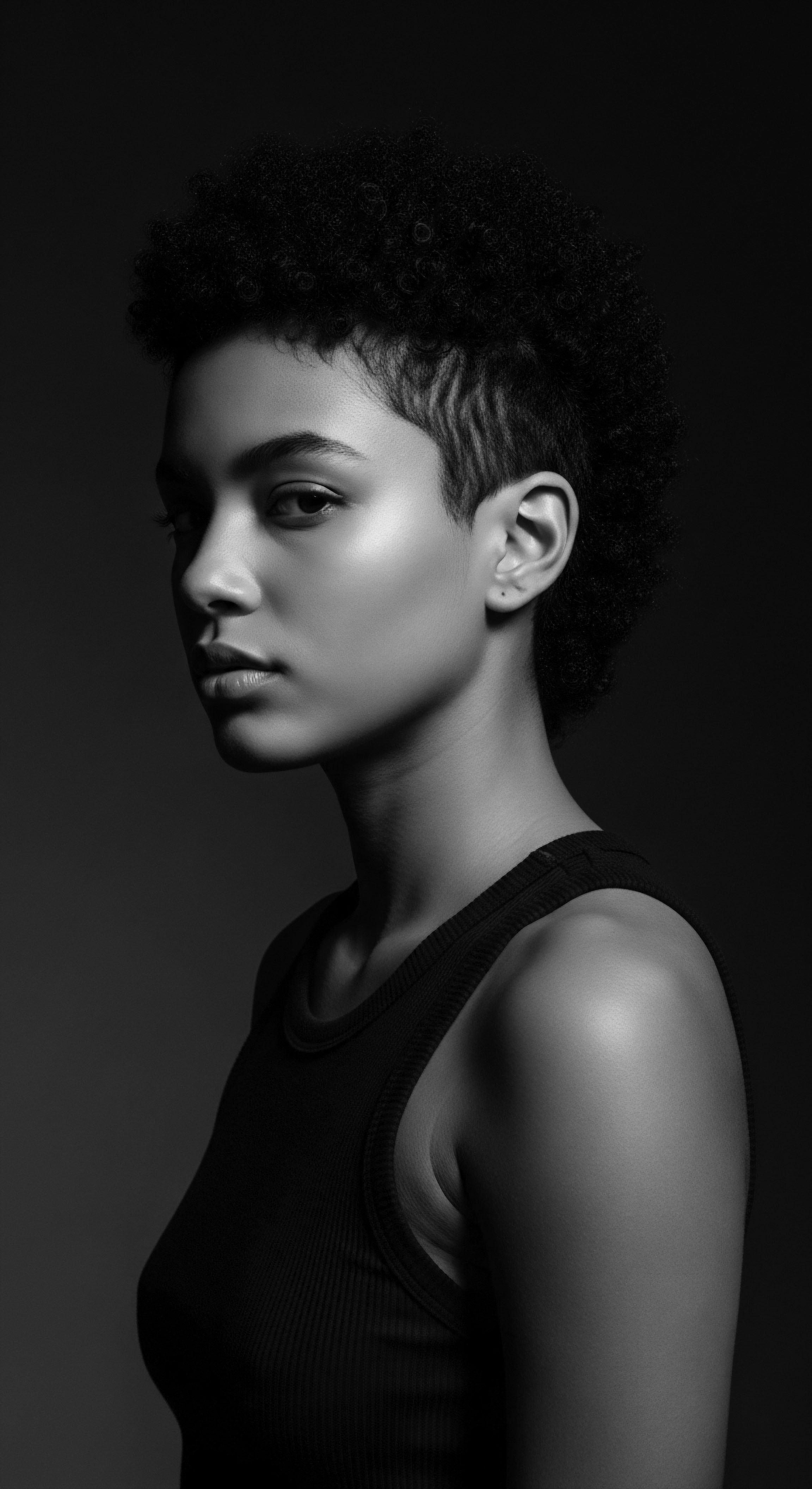
Echoes from the Source ❉ Elemental Biology and Ancient Practices
The very structure of textured hair, with its elliptical cross-section and numerous bends along the shaft, renders it inherently more susceptible to mechanical friction and moisture loss compared to straighter hair types. During sleep, as one shifts and turns, hair rubs against pillowcases, often made of absorbent materials like cotton. This constant abrasion can lift the hair’s outer cuticle layer, leading to dryness, frizz, tangles, and ultimately, breakage.
Ancestral communities, through generations of keen observation, understood these challenges without the benefit of modern microscopy. Their solutions, therefore, arose from an intimate knowledge of their environment and the properties of natural materials.
The initial approaches to Nighttime Hair Protection were simple, yet remarkably effective. They involved the use of natural fibers and coverings, often imbued with symbolic or spiritual significance. The practice of wrapping hair in soft cloths or leaves, or utilizing specialized sleeping tools, became commonplace. These methods formed the bedrock of what we now conceptualize as protective styling, a tradition that extends far beyond mere aesthetics into the realm of preservation and cultural continuity.
- Friction Reduction ❉ Wrapping hair in smooth materials like woven plant fibers or animal skins minimized direct contact with abrasive sleeping surfaces.
- Moisture Preservation ❉ Covering the hair helped to seal in natural oils and applied emollients, preventing the arid night air from stripping away essential hydration.
- Style Longevity ❉ Elaborate coiffures, often signifying social status, marital standing, or tribal affiliation, were meticulously maintained through overnight protection.
- Hygiene ❉ In some instances, coverings served a hygienic purpose, protecting hair from dust, insects, or environmental debris.
The understanding of Nighttime Hair Protection, therefore, is not a recent innovation. Instead, it is a timeless practice, an inherited wisdom, refined and adapted across diverse Black and mixed-race cultures, each iteration adding another layer to its profound significance.

Intermediate
Building upon its ancient foundations, the intermediate understanding of Nighttime Hair Protection for textured hair delves into how these heritage practices were not static but evolved, passed down through oral traditions, familial rituals, and communal learning. This concept extends beyond simple covering, encompassing a suite of intentional actions designed to support the hair’s structural integrity and aesthetic presentation through the vulnerable hours of repose. For individuals with textured hair, particularly those within the Black and mixed-race diaspora, Nighttime Hair Protection represents a continuum of care, a living legacy that adapts ancestral wisdom to contemporary needs.
The practical applications of Nighttime Hair Protection became more refined over time, influenced by environmental factors, available resources, and cultural shifts. The selection of materials, the specific wrapping techniques, and the integration of nourishing treatments during the evening hours all contributed to a holistic approach to hair preservation. These practices were not isolated acts; they were often communal, shared experiences, where older generations imparted their knowledge to younger ones, reinforcing bonds and preserving cultural identity.
Nighttime Hair Protection, in its intermediate sense, embodies the dynamic evolution of ancestral hair care, passed through generations as a living legacy of practical wisdom and cultural resilience.

The Tender Thread ❉ Living Traditions of Care and Community
The history of headwraps and bonnets, central to Nighttime Hair Protection, offers a compelling illustration of this continuity and adaptation. Originating in Sub-Saharan Africa, headwraps held significant symbolic meaning, denoting age, marital status, wealth, and tribal affiliation. They also served practical purposes, shielding hair from the elements. As African peoples were forcibly displaced during the transatlantic slave trade, these practices, including the use of head coverings for hair protection, traveled with them.
In the Americas, the headwrap took on a paradoxical yet powerful significance. Initially, enslavers often mandated head coverings for Black women, intending them as badges of servitude and to obscure their natural hair, which was often viewed as “unruly” or “unprofessional” by Eurocentric standards. Yet, in an extraordinary act of resilience and defiance, enslaved Black women transformed these imposed coverings into expressions of identity, artistry, and coded communication.
They used various fabrics, including scraps, to protect their hair from harsh labor conditions and to maintain styles. Helen Bradley Griebel’s study, “The African American Woman’s Headwrap ❉ Unwinding the Symbols,” underscores how the headwrap became “transformed into an emblem of self-determination and empowerment.” This historical context highlights how Nighttime Hair Protection, through the humble headwrap, became a silent yet potent act of resistance and self-preservation.

Evolution of Protective Coverings
The materials and forms of nighttime hair coverings evolved with ingenuity. From simple cloths to more refined silk and satin bonnets, the underlying objective remained constant ❉ to create a smooth, low-friction environment for the hair.
| Era/Context Ancient Africa/Egypt |
| Materials/Forms Woven plant fibers, animal skins, carved headrests |
| Primary Purpose (Heritage Context) Preserving elaborate styles, protecting from elements, symbolic significance. |
| Era/Context Transatlantic Slavery Era |
| Materials/Forms Scrap fabrics, cotton cloths, handkerchiefs (often enforced) |
| Primary Purpose (Heritage Context) Practical protection from labor, covert cultural expression, resistance. |
| Era/Context Post-Emancipation to Mid-20th Century |
| Materials/Forms Cotton scarves, early bonnets (often associated with domesticity) |
| Primary Purpose (Heritage Context) Maintaining straightened styles, reducing daily manipulation, economic necessity. |
| Era/Context Civil Rights Era & Natural Hair Movement |
| Materials/Forms Silk/satin scarves, bonnets, specialized wraps |
| Primary Purpose (Heritage Context) Protecting natural textures, moisture retention, affirming identity, minimizing breakage. |
| Era/Context The journey of nighttime hair coverings reflects a continuous adaptation of ancestral knowledge to preserve and celebrate textured hair across historical adversities and cultural shifts. |
The adoption of materials like silk and satin, now widely recognized for their benefits, stems from a long-standing understanding of their smooth surfaces. Unlike cotton, which can absorb moisture and create friction, silk and satin allow hair to glide, reducing tangles, frizz, and breakage. This shift, while seemingly technical, aligns perfectly with the ancestral quest for optimal hair preservation through thoughtful material selection.
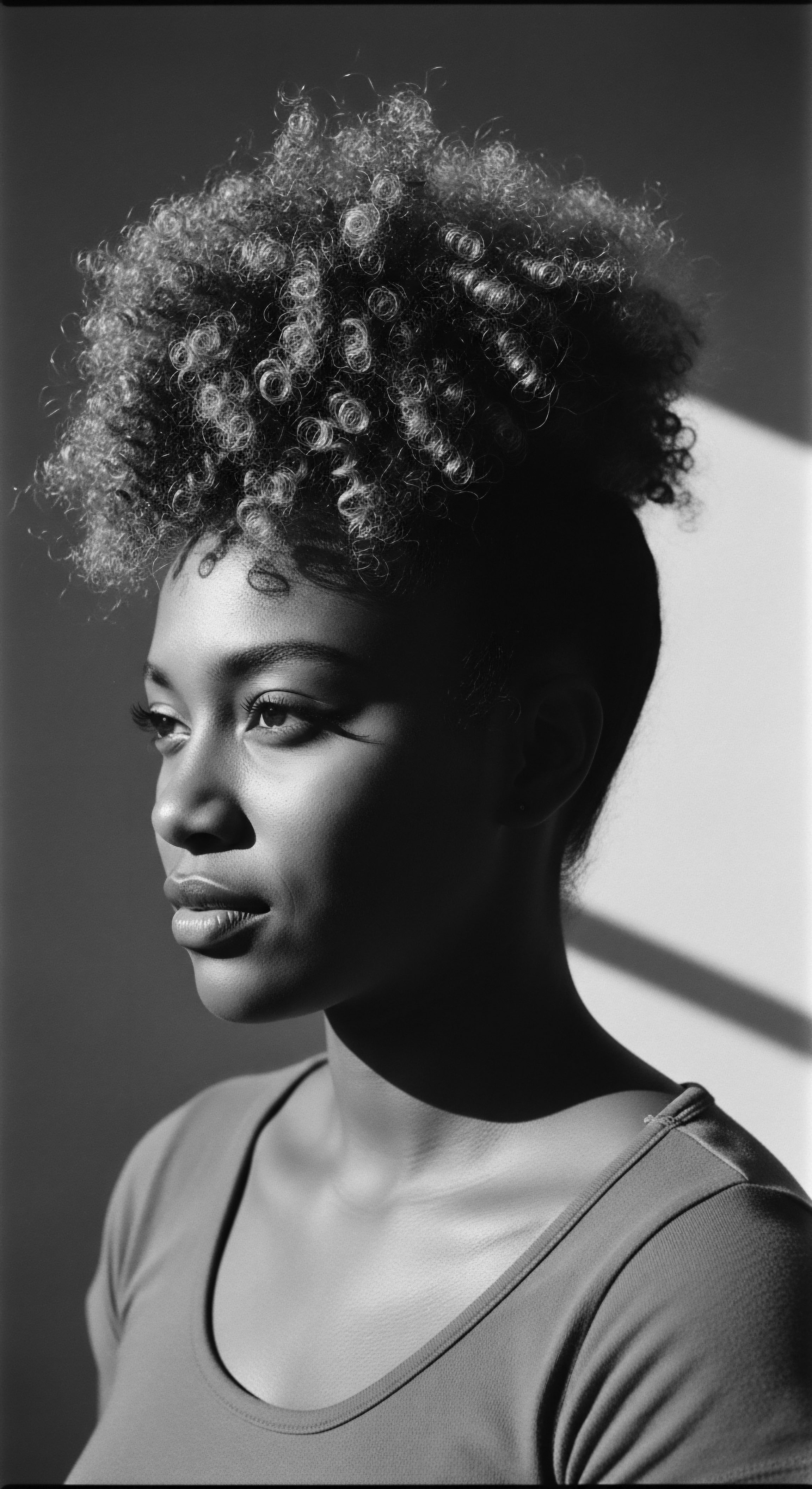
Nighttime Hair Rituals and Treatments
Nighttime Hair Protection is not merely about covering; it often incorporates a ritualistic application of nourishing treatments. These practices, passed down through generations, often involved natural ingredients ❉
- Oiling the Scalp and Strands ❉ Before covering, natural oils like shea butter, castor oil, or marula oil were (and are) applied to the hair and scalp. These oils act as emollients, sealing in moisture and providing a protective barrier against dryness.
- Braiding or Twisting ❉ Hair was often sectioned and braided or twisted into loose, protective styles. This contained the hair, preventing tangles and minimizing manipulation during sleep, thereby reducing breakage.
- Herbal Infusions and Rinses ❉ Some traditions incorporated herbal infusions or rinses, allowing the beneficial properties of plants to absorb overnight, promoting scalp health and hair strength.
These rituals underscore the holistic approach to hair care, where the act of protection was interwoven with deep nourishment, a testament to the comprehensive wisdom inherited from ancestors. The continuity of these practices, even as forms and materials have evolved, speaks to their enduring efficacy and profound cultural significance.
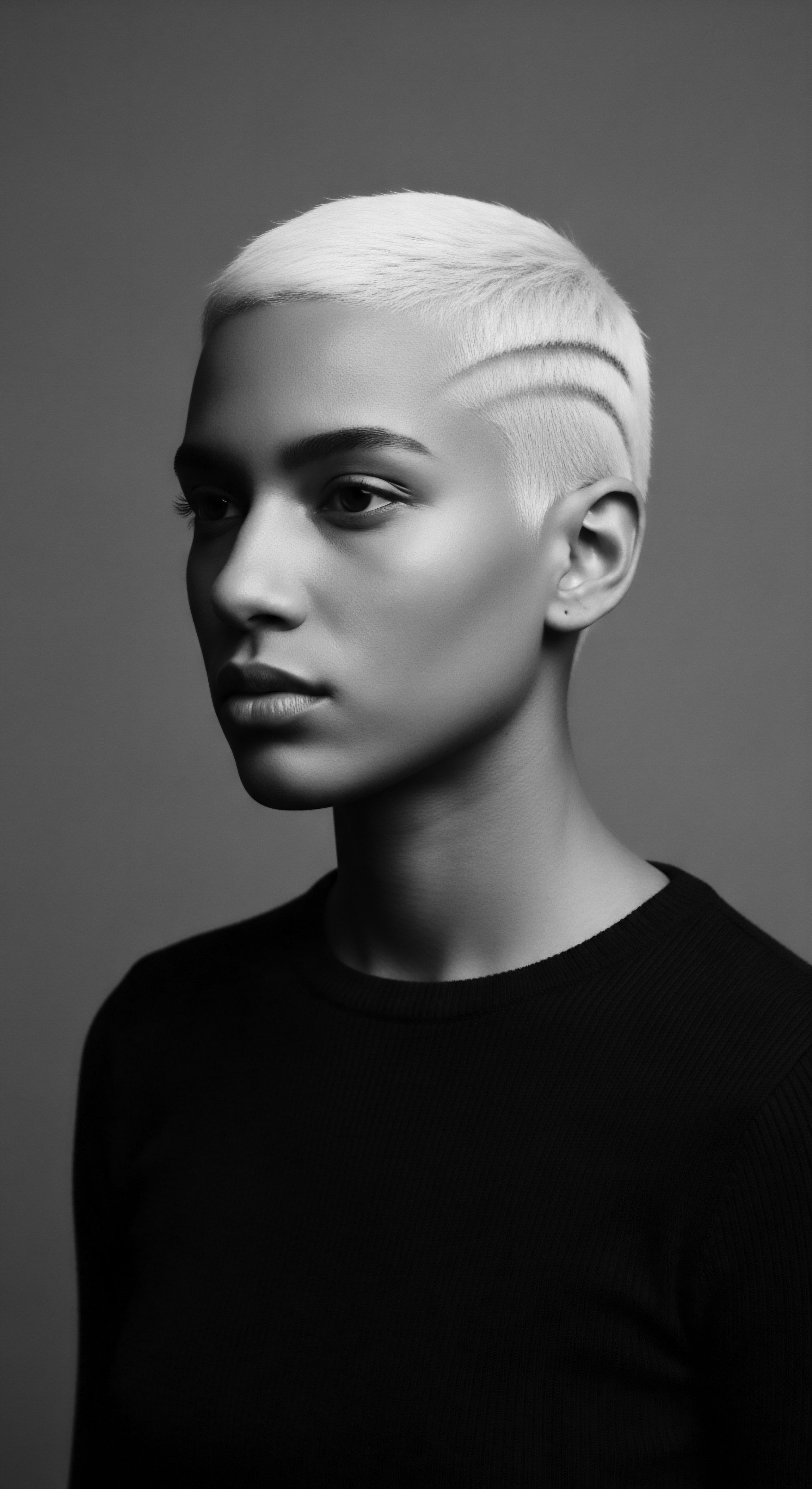
Academic
The advanced understanding of Nighttime Hair Protection, particularly within the context of textured hair, represents a sophisticated synthesis of anthropological insight, historical analysis, and contemporary trichological science. This concept transcends a simple definition; it is a comprehensive explication of the strategies employed to mitigate nocturnal hair damage, thereby preserving the structural integrity, moisture balance, and aesthetic continuity of hair, especially that with complex curl patterns. Its significance is profoundly amplified when viewed through the lens of Black and mixed-race hair heritage, where these practices are not merely functional but serve as vital conduits of cultural identity, resilience, and embodied knowledge.
The scientific underpinning of Nighttime Hair Protection rests on principles of friction reduction, moisture retention, and mechanical stress alleviation. Textured hair, characterized by its coiled or wavy structure, possesses an inherently uneven surface and a greater number of cuticle layers that are prone to lifting. This anatomical predisposition makes it highly susceptible to damage from abrasive forces, such as those encountered during sleep on conventional pillowcases. The friction generated between hair strands and bedding materials, particularly cotton, can lead to cuticle abrasion, moisture evaporation, and the formation of single-strand knots, collectively contributing to increased breakage and reduced length retention.
Nighttime Hair Protection for textured hair is a complex interplay of historical resilience, cultural affirmation, and scientific understanding, aimed at preserving the delicate architecture of coily and curly strands against nocturnal friction and moisture loss.
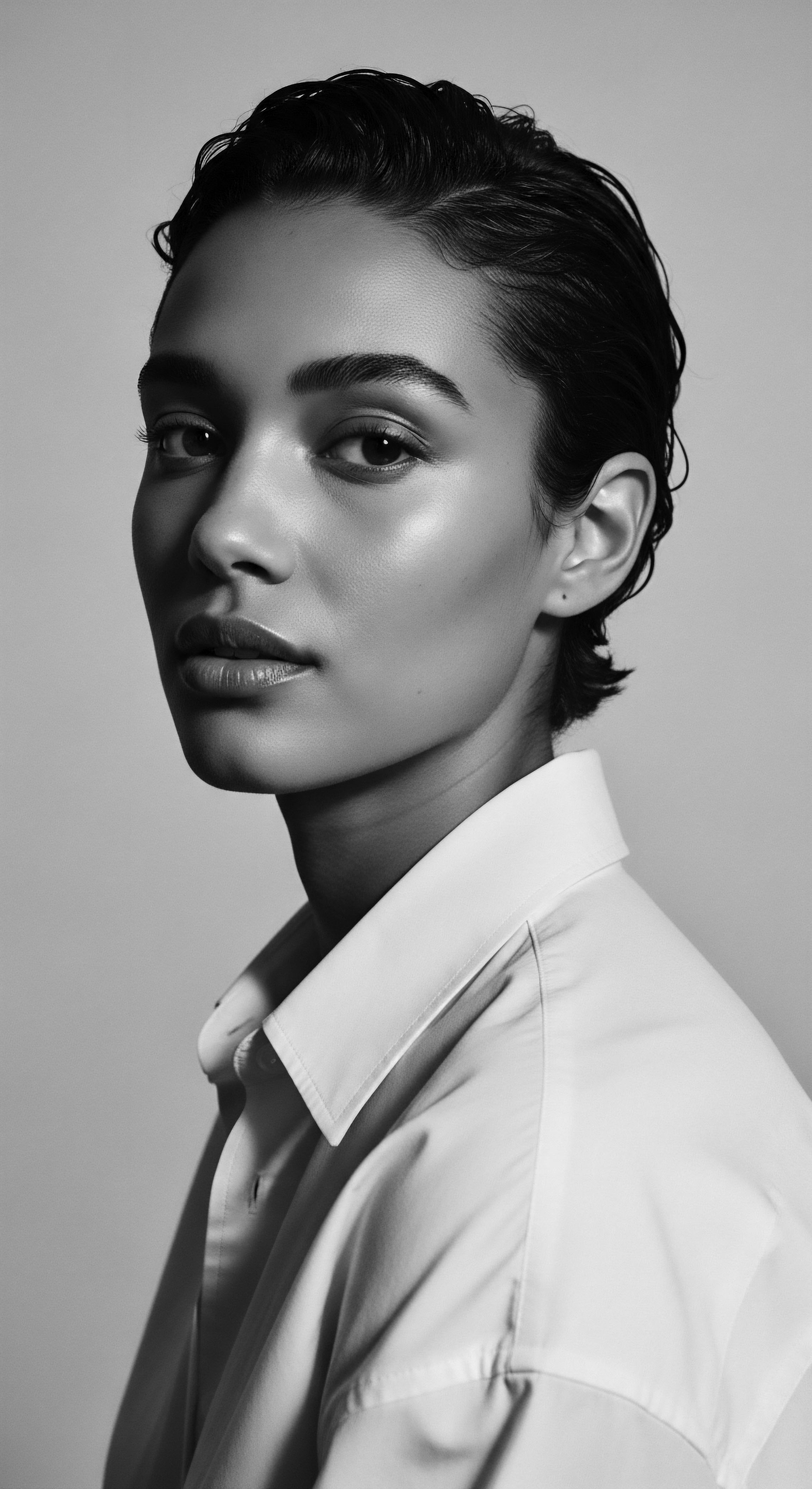
The Unbound Helix ❉ Voicing Identity and Shaping Futures
From an anthropological standpoint, the practice of Nighttime Hair Protection in African diasporic communities is a powerful testament to cultural continuity and adaptive ingenuity. Historically, hair held immense social, spiritual, and aesthetic weight in various African societies, serving as a complex visual language that communicated status, age, marital eligibility, and even spiritual devotion. The transatlantic slave trade violently disrupted these practices, yet the fundamental imperative to care for and protect hair persisted, transforming under duress.
The enforced head coverings during slavery, initially tools of dehumanization and social control, were subverted by enslaved Black women into symbols of quiet rebellion and cultural preservation. They continued to protect their hair, even if concealed, demonstrating an unwavering commitment to self-care and identity in the face of systemic oppression. As Ayana Byrd and Lori Tharps recount in Hair Story ❉ Untangling the Roots of Black Hair in America, Black women’s relationship with their hair has always been “complex and convoluted,” yet the desire for care and preservation remained constant. This historical experience imbues contemporary Nighttime Hair Protection with layers of meaning, connecting present-day practices to a profound lineage of defiance and self-affirmation.
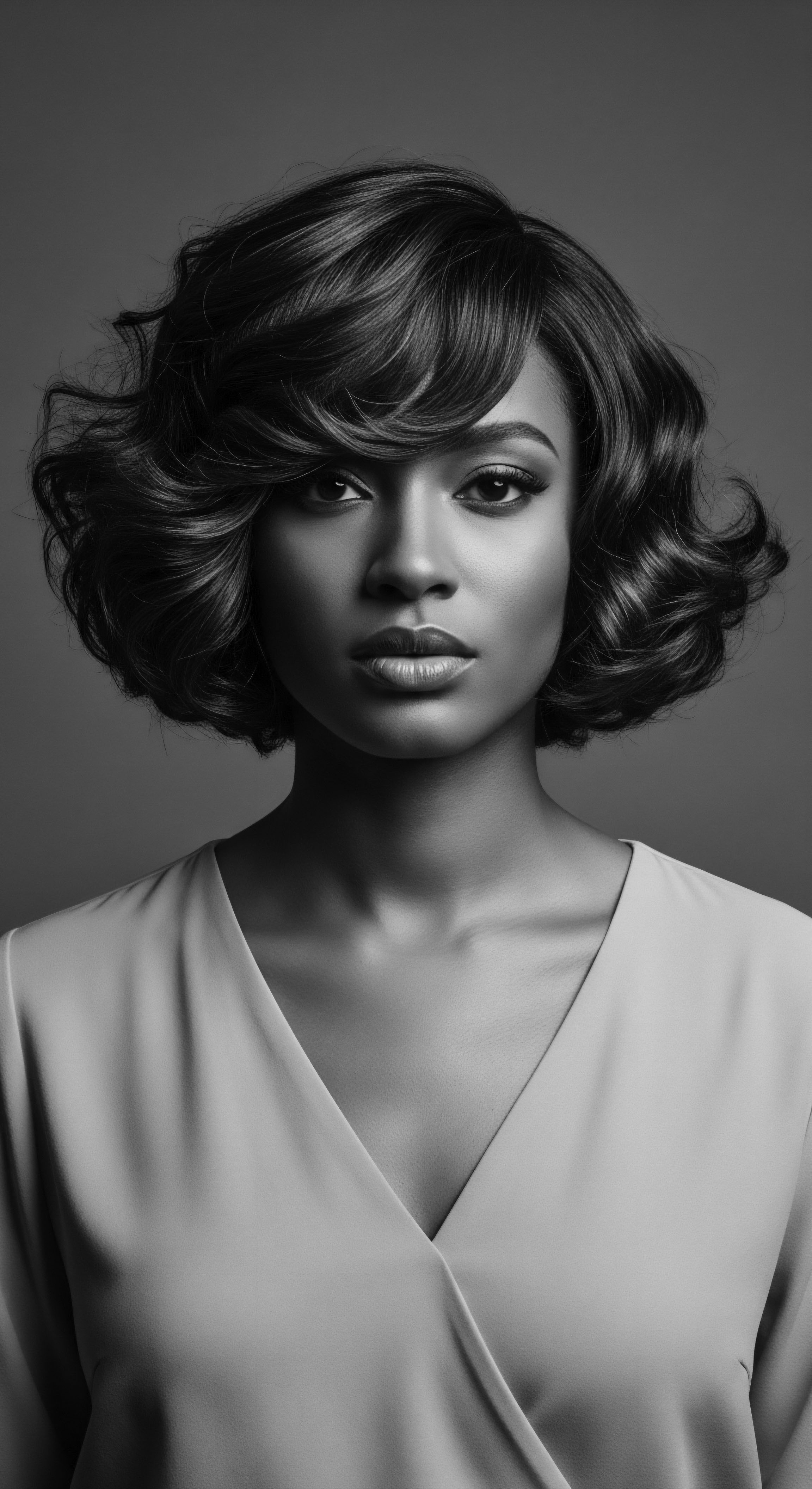
Trichological Perspectives on Nocturnal Hair Preservation
Modern trichology validates many long-standing ancestral practices. The primary mechanisms of damage during sleep involve ❉
- Mechanical Stress ❉ Tossing and turning creates shear forces on hair strands, leading to tangles, knots, and ultimately, fracture points. This is particularly pronounced in hair with higher curl densities.
- Frictional Abrasion ❉ Cotton pillowcases, with their rough fibers, act like microscopic sandpaper, abrading the hair’s cuticle. This opens the cuticle, allowing internal moisture to escape and leaving the hair vulnerable to further damage.
- Moisture Desiccation ❉ Absorbent fabrics like cotton draw moisture directly from the hair, leading to dryness and increased brittleness, making the hair more prone to breakage.
The use of smooth, non-absorbent materials like silk or satin for bonnets, scarves, or pillowcases directly counters these damaging forces. These materials minimize friction, allowing hair to glide freely, thereby preserving the cuticle layer and reducing moisture loss. Research suggests that sleeping on satin or silk can reduce hair dryness and prevent breakage. This scientific validation provides a contemporary lens through which to appreciate the intuitive genius of ancestral hair care.

Socio-Cultural Implications and Economic Impact
The continued prominence of Nighttime Hair Protection in the Black hair community carries significant socio-cultural weight. It represents a conscious choice to prioritize hair health and length retention, challenging historical narratives that often devalued Black hair. This practice fosters a sense of agency and self-determination, contributing to a broader movement of natural hair acceptance and celebration.
The market for products supporting Nighttime Hair Protection, such as silk bonnets and satin pillowcases, has also grown substantially, reflecting a powerful consumer demand rooted in cultural practices and a desire for optimal hair health. This economic aspect further solidifies the practice’s place as a cornerstone of contemporary textured hair care.
Moreover, Nighttime Hair Protection plays a role in the longevity of protective styles like braids, twists, and locs, which themselves are deeply embedded in African hair heritage. By preserving these styles overnight, individuals extend their wear, reducing the frequency of manipulation and styling, which is beneficial for hair health and growth. This synergy between Nighttime Hair Protection and protective styling creates a virtuous cycle of care that honors both ancestral methods and modern scientific understanding.
The practice of Nighttime Hair Protection is thus a multifaceted concept, serving not only a practical biological purpose but also acting as a profound cultural artifact. It is a daily ritual that echoes centuries of resilience, a quiet act of self-love and cultural affirmation, and a testament to the enduring wisdom of textured hair heritage.

Reflection on the Heritage of Nighttime Hair Protection
As we draw this exploration to a close, the concept of Nighttime Hair Protection reveals itself not as a mere footnote in the annals of beauty, but as a vibrant, living chapter within Roothea’s ‘living library’—a testament to the enduring ‘Soul of a Strand.’ It is a narrative woven with threads of resilience, innovation, and an unwavering commitment to self-preservation, particularly for textured hair. The journey from ancient headrests and humble fabric wraps to the sophisticated silk bonnets of today is more than a chronological progression; it is a continuous dialogue between ancestral wisdom and contemporary understanding.
The echoes from the source remind us that the innate understanding of hair’s vulnerability during repose was not a scientific discovery but an intuitive recognition, born from generations living in harmony with their bodies and environments. This wisdom, honed through necessity and passed down through the tender thread of familial and communal care, became a silent language of love and protection. In every wrap, every bonnet, every carefully laid strand, there lies a story of heritage, a quiet act of defiance against erasure, and a celebration of the unique beauty that coils and spirals with such magnificent grace.
The unbound helix of textured hair continues to tell its story, affirming that the practices of Nighttime Hair Protection are not simply about preventing breakage or retaining moisture. They are about honoring a lineage, connecting with the ingenious spirit of those who came before, and asserting the inherent value of Black and mixed-race hair. This daily ritual, performed in the quietude of the night, is a powerful affirmation of identity, a profound act of self-care that reaches back through time, securing the past while safeguarding the future. It is a beautiful, necessary tradition, perpetually reminding us that true wellness begins with reverence for our roots.

References
- Byrd, A. D. & Tharps, L. L. (2014). Hair Story ❉ Untangling the Roots of Black Hair in America (Revised Edition). St. Martin’s Press.
- Griebel, H. B. (1995). The African American Woman’s Headwrap ❉ Unwinding the Symbols. In Dress and Identity (pp. 445-460). Fairchild Publications.
- Wong, N. Williams, K. Tolliver, S. & Potts, G. (2025). Historical Perspectives on Hair Care and Common Styling Practices in Black Women. Cutis, 115(3), 95-98.
- Dabiri, E. (2019). Twisted ❉ The Tangled History of Black Hair Culture. HarperCollins.
- Sherrow, V. (2006). Encyclopedia of Hair ❉ A Cultural History. Greenwood Publishing Group.
- Morsiani, B. (2018). Transcultural body spaces ❉ re-inventing and performing headwrap practice among young Congolese women in London. African and Black Diaspora ❉ An International Journal, 11(3), 295-308.
- Wegner, J. H. (2018). Headrests in Glencairn’s Egyptian Collection ❉ Practicality and Protection. Glencairn Museum News, 7.
- Amos, N. (2024). Cosmetopoeia of African Plants in Hair Treatment and Care ❉ Topical Nutrition and the Antidiabetic Connection? Diversity, 16(2), 96.
- Byrd, A. D. & Tharps, L. L. (2001). Hair Story ❉ Untangling the Roots of Black Hair in America. St. Martin’s Press.
- Genovese, E. D. (1974). Roll, Jordan, Roll ❉ The World the Slaves Made. Pantheon Books.
